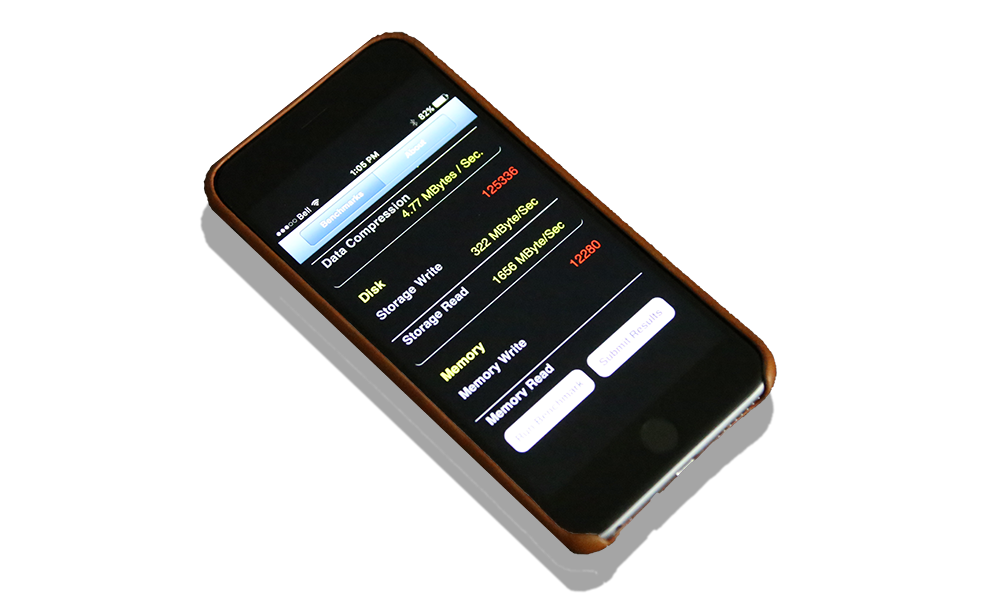Without a doubt, the latest and greatest toy being fought for in our offices just has to be the Iphone 6S Plus. Not a traditional Apple fan, I found myself quickly swayed by 3D Touch, which enables us to perform software commands without even opening the software, the new and updated Siri who seems to understand my quick Canadian speech all too clearly (eh?), as well as Live Photos. For the business user, efficiency and productivity are increased dramatically with 3D Touch, while unfortunately, it still seems that Samsung and Apple are still a distant second to Blackberry in multi-tasking.
No stranger to holding bragging rights to the latest and greatest in new tech, Apple first introduced their PCIe SSD based MacBook Air to the world, based loosely on the Samsung XP941 SSD, long before others including Samsung. Even today, PCIe SSDs have yet to become commonplace in PC ultrabooks where Apple is now moving up to the world of NVMe storage. The iPhone 6S is no different and thanks to neurostar at MacRumors Forum page, we get a first hand look at those hidden details of the new iPhone that Apple just doesn’t want us to see. This picture was the first to be posted after following a process that we definitely won’t be doing on our iPhone 6S Plus anytime soon:
These details are listed at root inside your Apple iPhone 6S (or 6S Plus in our case), and state that, at least for the 128GB version, an NVMe controller and TLC NAND flash memory is used. Here is yet another of the results obtained by neurostar, courtesy of our friends at MacRumors:
The implementation of NVMe would be a definite performance booster, as would the implementation once again of TLC NAND flash memory to control the ever escalating cost of the new iPhone. A single chip of 128GB NAND flash memory is not the cheapest thing to buy. As we weren’t quite ready to break open our new iPhone as of yet, we checked out iFixit’s “iPhone 6S Plus Teardown” and discovered the memory inside to be SK Hynix H230DG8UD1ACS TLC (3-Bit) NAND Flash Memory.
But what about performance… Is it possible to reach disk transfer speeds just above 1.5GB/s as we saw above in our first photo? Passmark’s Performance Test Mobile seems to think so as we are pulling read disk speeds between 1656MB/s and 1989MB/s from their results chart which are relatively consistent with dozens of other posted 6S scores. At very least, there seems to be no doubt whatsoever that the new iPhone 6S is easily the top dog on the block with respect to disk performance. But can we really reach those speeds in a smartphone though?
 The SSD Review The Worlds Dedicated SSD Education and Review Resource |
The SSD Review The Worlds Dedicated SSD Education and Review Resource | 


“The implementation of NVMe would be a definite performance booster”
apple must have done a really good job on their controller-seing as Hynix TLC
is probably the cheapest Nand out there.
Les this really cracked me up-
“as would the implementation once again of TLC NAND flash memory to control
the ever escalating cost of the new iPhone.”
Approx cost of $245 that sells for $800
I definitely agree that premium merchandise comes with a premium price; the cost of this phone here after taxes with the protection plan and case would be just under $1800 w/o contract. It still goes to say, however, that their use of a premium Toshiba (or there partner Samsung’s) mlc 128GB chip would have driven the cost up significantly.
Apple also multi-source components. If you look at iFixit iPhone 6s teardown, it’s a Toshiba THGBX5G7D2KLFXG 16 GB 19 nm NAND Flash:
https://www.ifixit.com/Teardown/iPhone+6s+Teardown/48170
Something: why isnt apple putting uSB 3 on these?
1800MB/s? Big B? That doesn’t line up with anandtechs tests (~400-500MB/s iirc) and would make it faster than their Macbook Pros…That seems off. It’s still the fastest phone storage out there but that graph is odd. Even the 16GB is faster than other sites tests of the 64GB.
I don’t think Passmarks scores translate into MB/s, that’s the issue.
*Can’t read the comments.
Which is better as the future of mobile storage, UFS or NVMe?